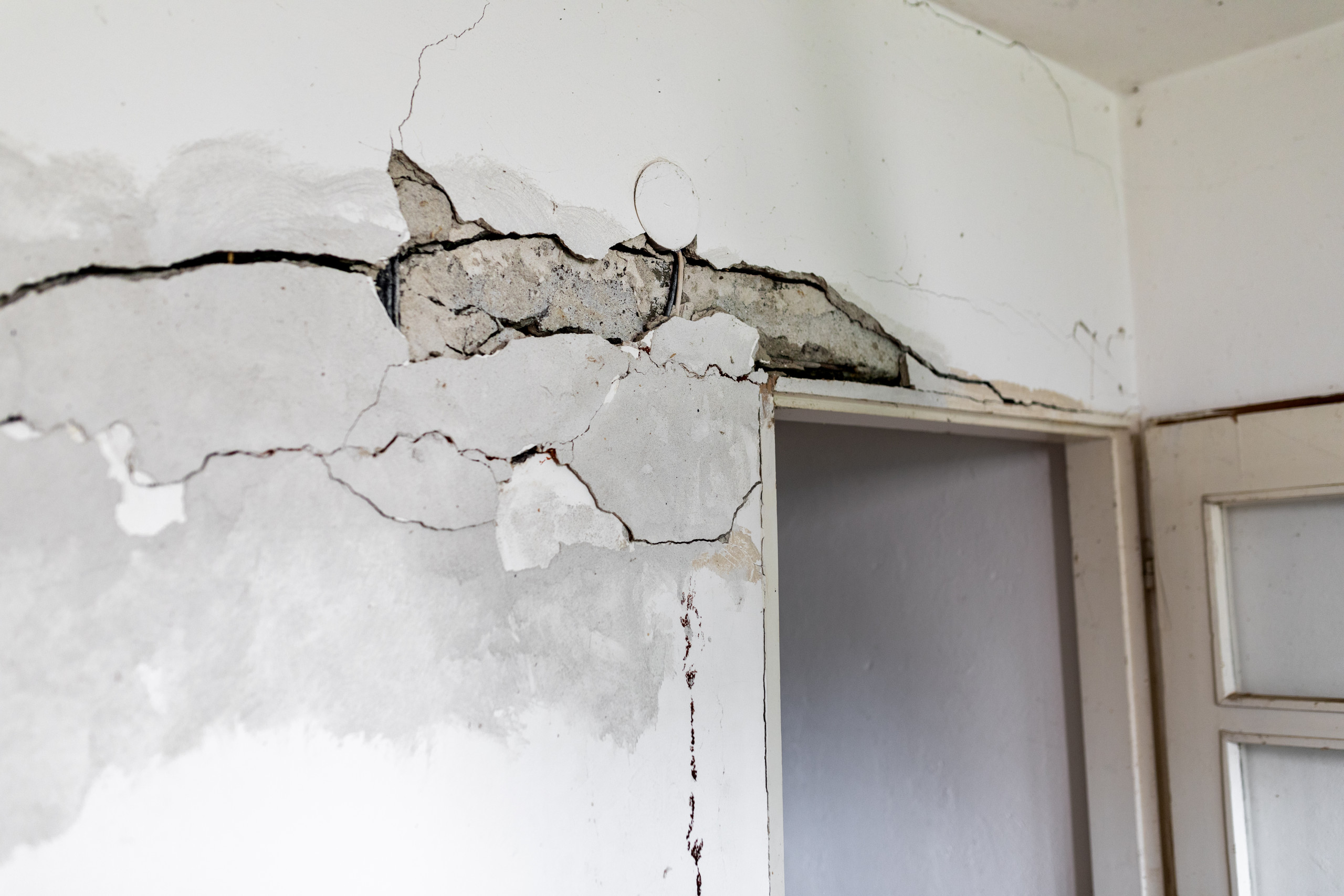by Luke Cronin
Share
by Luke Cronin
Share

Structural inspections are essential in keeping buildings safe and sound. They help identify potential issues that could lead to costly repairs down the line. In this guide, we’ll break down what structural inspections entail, why they’re crucial, and what you can expect from the process.
Introduction to Structural Inspections
Structural inspections are like a health check-up for buildings. They involve a comprehensive evaluation of a structure’s key components to ensure everything is holding up properly. Think of them as the backbone of any property maintenance plan—without them, you’re flying blind.
Importance for Property Buyers
- Peace of Mind: These inspections can reveal hidden issues that might not be immediately apparent.
- Informed Decisions: Just as you wouldn’t buy a car without looking under the hood, skipping a structural inspection can lead to unforeseen problems.
Importance for Property Owners
- Safeguarding Investment: Regular inspections help maintain the property’s condition.
- Preventative Measures: Catching minor problems early prevents them from developing into costly repairs.
In short, structural inspections aren’t just a good idea—they’re indispensable.
What is the Purpose of a Structural Inspection?
When it comes to safeguarding a building’s integrity, structural inspections are paramount. These inspections primarily aim to ensure that a building is both safe and stable for its occupants. By meticulously assessing a structure’s components, inspectors can identify risks that, if left unchecked, might lead to severe damage or failure. This proactive approach is vital not just for physical safety but also for financial security. Discovering potential issues early on can save property owners substantial sums by enabling timely repairs, thus mitigating the need for extensive and costly interventions later. Beyond personal interests, structural inspections often fulfill legal obligations, ensuring that properties adhere to local building codes and regulations. This compliance not only shields owners from potential legal entanglements but also fosters community trust in structural safety standards.
The Process of Structural Inspections
Understanding the nuts and bolts of a structural inspection can take the mystery out of the process. Here’s a quick rundown of what happens.
How Does a Structural Engineer Check a House?
It all starts with an initial assessment. Think of this as a general once-over—an engineer conducts a broad review, assessing the overall condition of the property. They check for obvious red flags while also getting a feel for what’s normal and what’s not.
After that, things get a bit more detailed. The engineer zooms in on three main areas: the foundation, roofing, and walls. The foundation is your building’s backbone, so inspecting it thoroughly is key. The engineer checks for cracks, shifts, or other signs of trouble. Roofing and walls aren’t ignored either; they’re assessed for structural integrity and signs of wear or damage.
The inspection is not just a pair of eyeballs at work. Engineers often use advanced tools like thermal imaging cameras and moisture meters. These help them spot issues that aren’t immediately visible, like hidden leaks or insulation problems.
 Once the structural detective work is done, it’s time to compile the findings. The engineer generates a detailed report, laying out identified issues and potential fixes. This document becomes a critical resource for property owners, guiding them on necessary repairs or improvements.
Once the structural detective work is done, it’s time to compile the findings. The engineer generates a detailed report, laying out identified issues and potential fixes. This document becomes a critical resource for property owners, guiding them on necessary repairs or improvements.
How Long Do Structural Inspections Take?
Typically, you’re looking at a window of 1 to 2 hours for a thorough inspection. Of course, it can vary based on the property’s size and condition, but this gives you a ballpark idea. Keep in mind, the time spent is an investment in your property’s future security and value.
Foundation Inspection: A Cornerstone of Structural Inspections
The foundation is quite literally the base upon which a structure stands, making its inspection a crucial part of any structural evaluation. Overlooking this step is akin to ignoring the roots while evaluating the health of a tree. Here’s what goes into inspecting this cornerstone of your property:
Structural Engineer Foundation Inspection
A proper foundation inspection begins with a close look at any visible cracks or signs of settlement. These are not just superficial concerns; they serve as potential indicators of more serious underlying issues. Cracks can signify shifts in the building as it settles over time, or they can point to more dynamic problems like soil erosion or foundation movement. Structural engineers are adept at distinguishing between surface-level cracks and those that hint at deeper troubles.
Next, moisture is another focal point. Any water pooling around the foundation or signs of dampness can mean trouble. Water is an arch-nemesis to any foundation, capable of causing long-term damage if not properly managed. An engineer will identify moisture issues and assess drainage systems to ensure they’re diverting water away from the structure effectively.
Finally, soil stability is evaluated. The ground beneath your property must support the weight and demands of the building without issue. Engineers will look at soil composition and compaction to determine if the foundation remains secure in its environment. Weak or shifting soil can lead to subsidence, which is a fancy term for the ground literally moving away from under your home.
Each of these steps is essential to confirm that the foundation remains an unyielding support to the entire building, ensuring its longevity and safety.
Things That Fail a Home Inspection
Structural inspections can feel like a test, and just like any test, some things can cause you to fail. These are the common culprits that can throw a wrench in the works:
- Foundation Issues: This is a biggie. When a foundation doesn’t hold up its end of the bargain, you’ll see uneven floors and walls with more cracks than a desert floor. These are not just cosmetic flaws but potential signs of a shifting or sinking foundation.
- Roof Damage: Think of your roof as the first line of defense against the elements. If it’s got leaks or is missing shingles, it can’t do its job well. You don’t want to be the person who finds out their roof is more sieve than shelter during a rainy weekend.
- Undersized or damaged framing: Weak or inadequate framing can lead to uneven floors, bowed walls, or a compromised roof, posing safety risks and costly repairs. Inspectors flag these problems to prevent further deterioration which will help you out in the long run on making an educated decision when buying your home.

A failing inspection due to any of these issues can feel like hitting a brick wall, but it’s also a chance to address serious problems before they escalate. Stay ahead of the game: regular maintenance and pre-inspection checkups can save you from these nasty surprises.
Why is Inspection Important in Construction?
Structural inspections in construction play a crucial role in risk mitigation. They enable early detection of potential issues that can lead to bigger headaches if left unchecked. For property owners and investors, this means intercepting problems before they spiral into costly disasters. By catching these issues early, inspections save you the expense and frustration of dealing with significant repairs or, worse, structural failures down the line.
Moreover, inspections carry a financial upside beyond cost savings. They ensure that the construction adheres to all legal and regulatory standards. This compliance not only keeps you out of legal hot water but also guarantees that your property meets established safety codes. Staying aligned with regulations reassures future buyers or investors of the property’s integrity, thereby securing or even boosting its market value.
Simply put, regular inspections are your first line of defense against unforeseen risks, aligning your property with best practices and safeguarding your investment for the long haul.
External Perspectives and Resources
When it comes to structural inspections, there’s no shortage of opinions and advice from experts in the field. To broaden your understanding, it’s helpful to consider insights from various perspectives. A great start is exploring the comprehensive guide offered by CBSMN. This resource delves into what a structural engineer inspection entails, emphasizing its role in ensuring the integrity of a building. It breaks down the process with clear, practical examples and explains why these inspections are crucial, not just for safety, but also for maintaining the longevity of a property.
Additionally, our in-house article on property investment red flags provides a valuable internal perspective. Review Property Investment Red Flags: Structural Issues to Look For to learn about common structural issues that might deter or inform investment decisions. It’s particularly useful for property investors aiming to pinpoint warning signs of structural problems that could impact future repairs or resale value.
These resources complement each other, offering a well-rounded view of structural inspections. They underscore the importance of staying informed and vigilant when it comes to maintaining the structural health of any building, whether you’re buying, selling, or simply managing a property.
Conclusion: The Value of Structural Inspections in Real Estate
Structural inspections are more than just a box to tick off in the process of buying or owning property; they’re an essential safeguard for your investment. At their core, these inspections ensure two critical elements: safety and longevity. By regularly evaluating the integrity of a building, owners can catch minor issues before they balloon into significant, costly problems. This proactive approach not only shields your wallet from unexpected repairs but also upholds the property’s market value.
Think of it as regular maintenance for your car. Skipping those routine check-ups might save you time now, but they can lead to costly breakdowns later. The same concept applies to buildings; regular structural inspections are like your building’s health check, preserving its condition and, by extension, its worth.
In essence, embracing regular inspections is a smart strategy. It’s about staying ahead of the curve, keeping potential risks at bay, and ensuring your property remains a safe, sound investment for years to come.

